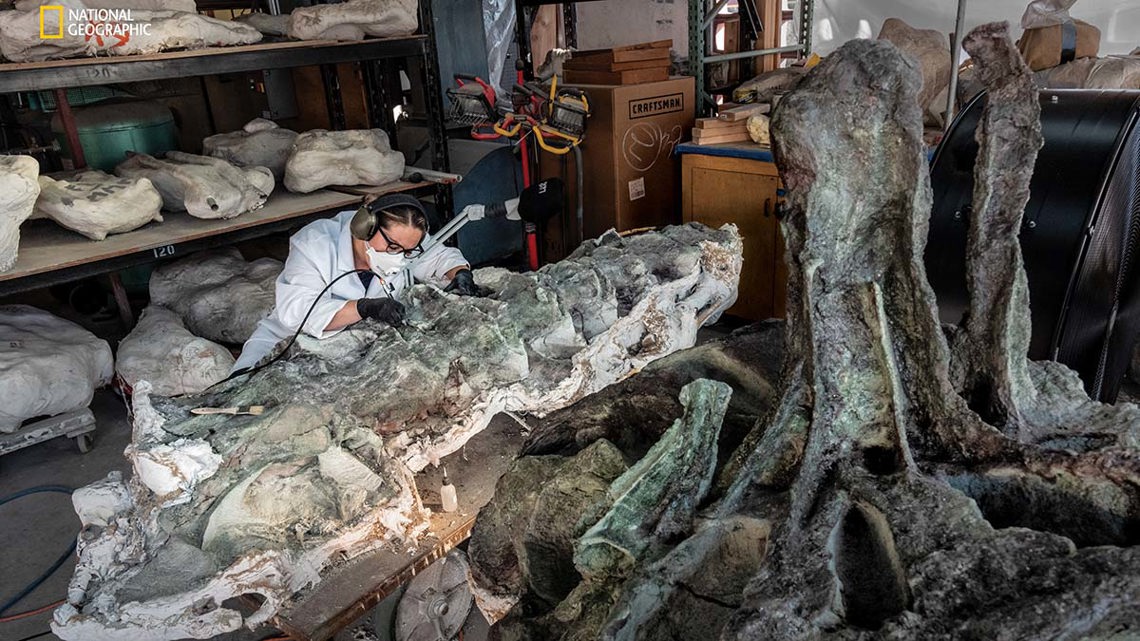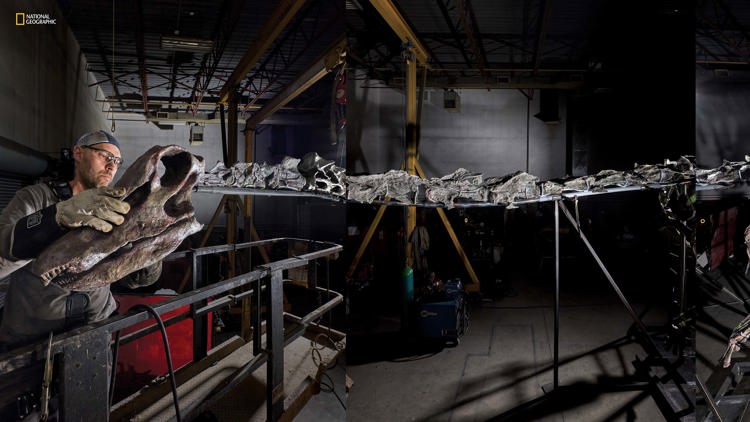HOUSTON — What began as a giant leg bone found in southeastern Utah in 2007 took scientists on a fascinating journey of the discovery, recovery and reassembly of a 150-millon-year-old rare dinosaur.
Seventeen years later, they had Gnatalie. The reassembled dino skeleton is 75 feet long -- nearly twice the size of a METRO bus -- and weighs roughly five tons. She will make her public debut this fall in a display at the Natural History Museum of Los Angeles County where she has her very own wing.
National Geographic went behind the scenes for exclusive coverage of the painstaking process for a story in their September 2024 issue.
After the first find in 2007, an NHMLAC team spent the next 10 summers at the remote Utah site as they unearthed a jumble of massive dinosaur bones from different species.
“You’re playing pick-up sticks with a bunch of dinosaur bones,” NHMLAC paleontologist Alyssa Bell told National Geographic. “They’re all tangled and locked together.”
During the long recovery process, scientists battled rattlesnakes, mountain lions and pesky gnats -- thus the name Gnatalie.
Along the way, the team determined that they'd unearthed what may be a new species of dinosaur that likely belonged to the Diplodocus family. With her long neck, tail and four legs, scientists say Gnatalie is a sauropod, the largest of all dinosaurs and the most massive land animal that ever lived.
According to NHMLAC, Gnatalie is also the world's first green-colored dino skeleton ever mounted for display. They believe volcanic activity around 50 million years ago made it hot enough for a new green mineral that replaced an earlier mineral, giving Gnatalie her unusual green color.
When the excavation was complete, scientists worked with artists at Research Casting International in Canada which specializes in reconstructing real dinosaurs. They began the reconstruction process first with a small model. When the life-size display was complete, they had to take it apart and ship it to NHMLAC to be reconstructed.
Gnatalie, in all her glory, will be on display to the public starting in November.







